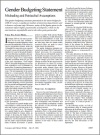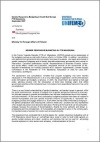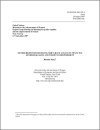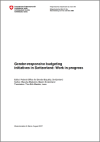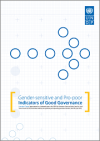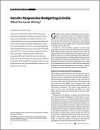FOUND 45
This publication by the Nordic Council of Ministers Copenhagen 2006 is the final report from the project Gender Budgeting 2004-2006, in which the five Nordic governments included in this project report their work.
The article draws attention to the numerous assumptions relating to the proportion of allocations under a scheme that directly benefits women which unfortunately form the basis of the Gender Budgeting exercise.
This article is about Gender Responsive budgets in poland.
This Commonwealth Secretariat publication provides a conceptual framework for work on gender responsive budgets, traces the evoluation of work in this area and provides information on country initiatives. This is a crucial resource for researchers, policy-makers and practitioners.
This fact sheet was produced by UNIFEM in 2007 under the UNIFEM sub -regional programme "Gender-Responsive Budgeting in South East Europe: Advancing Gender Equality and Democratic Governance through Increased Transparency and Accountability launched in late 2006.
This paper uses examples from Australia and the Pacific Island Countries and Territorities to address the following questions:How can we assess a government's achievements in gender responsive budgeting? How can gender responsible budgeting be made sustainable in the face of change?
Labour market issues, be those of employment, unemployment, inactivity, wages and the like are very important for every country since they are linked to some of the main indicators of economic wellbeing or lack thereof.
The first debates on gender-responsive budgeting initiatives emerged in Switzerland in 1994, The choice of methods for conducting gender-differentiated analyses and the means by which they are conducted have been informed, and continue to be informed, by the relatively early emergence of gender-resp
This paper was prepared as a background to the UNDP Oslo Governance Centre and Indian Council for Social Science Research (ICSSR) International workshop on engendering and empowering governance indicators, New Delhi, April 2005.
The article examines the two main strategies adopted by the Government of India for institutionalizing gender responsive budgeting to highlight what has gone wrong and what needs to be fixed in order to achieve better outcomes for women.

